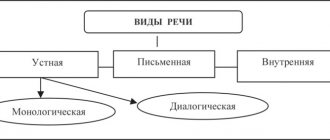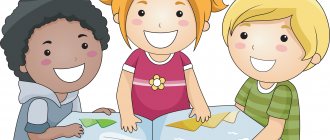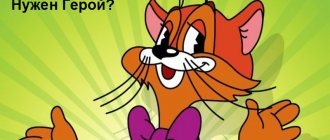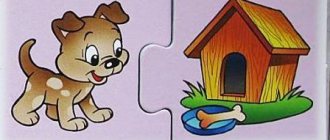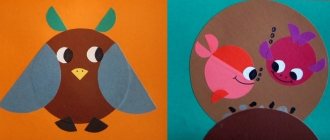Speech development in children of senior preschool age
Consultation for parents and educators on the topic:
“Speech development in children of senior preschool age”
Teacher – speech therapist: Tkalicheva G.V.
Tomsk 2022
Topic: “Speech development in children of senior preschool age”
Tasks:
Expand parents' knowledge about the speech characteristics of children of the 6th year of life;
To form parents’ knowledge about the importance of developing children’s correct speech;
Introduce parents to games aimed at developing children’s correct speech.
Speech development is the most important acquisition of a child in preschool age. Well-developed speech makes it easier to perceive knowledge acquired in kindergarten, at school, at home, and helps in communicating with peers and adults.
A child with well-developed speech easily enters into communication with the outside world. He can clearly express his thoughts, desires, and consult with peers, parents, and teachers. A child’s unclear speech makes it difficult to communicate and imposes many complexes on the child’s character that will require the attention of specialists such as a speech therapist, speech pathologist, psychologist and others. A child with undeveloped speech has a decline in curiosity, which is especially characteristic of preschool age.
In our time of development of information technology, the development of speech is important. Children know how to use this technique, but they cannot show their speech creativity. Children know how to communicate with each other, but not everyone is able to express their speech in class (situational conversation).
In older preschool age, the most intensive development of speech occurs. A child's vocabulary increases from two hundred to several thousand words. The sound aspect of speech is also improved. Children can correctly reproduce hissing, whistling and sonorant sounds. Phonemic hearing and intonation expressiveness of speech develop.
The grammatical structure of speech is improved. Children use almost all parts of speech and are actively engaged in word creation.
Coherent speech develops. Children can retell, tell from a picture, conveying not only the main thing, but also the details.
Unfortunately, not all children develop speech in accordance with age standards; many have difficulties in mastering certain categories of speech and disturbances in the formation of speech components. I bring to your attention the most pressing problems
, characteristic of many children of senior preschool age:
1.Poor vocabulary;
2. Insufficiently formed phonemic hearing and phonemic perception: Phonemic hearing is the ability to hear and distinguish sounds in a stream of speech in a different linear order (inhale-input, sleep-nose), in words that are similar in sound, but different in meaning (heron-drop, tower-arable land Phonemic perception is sound analysis, which underlies mastery of the process of learning to read and write: this is the ability to determine the presence or absence of a sound in a word; the ability to determine the location of a sound in a word; the ability to determine the sequence of sounds and their number in a word.
SENIOR PRESCHOOL AGE
CHARACTERISTICS OF SPEECH DEVELOPMENT
In children of senior preschool age, speech development reaches a high level. Most children correctly pronounce all the sounds of their native language, can regulate the strength of their voice, the pace of speech, the intonation of a question, joy, and surprise.
By older preschool age, a child has accumulated a significant vocabulary. The enrichment of vocabulary (the vocabulary of the language, the set of words used by the child) continues, the stock of words that are similar (synonyms) or opposite (antonyms) in meaning, and polysemantic words increases.
Thus, the development of the dictionary is characterized not only by an increase in the number of words used, but also by the child’s understanding of different meanings of the same word (multiple meanings). Movement in this regard is extremely important, since it is associated with children’s increasingly complete awareness of the semantics of the words they already use.
At senior preschool age, the most important stage of children’s speech development—the acquisition of the grammatical system of the language—is generally completed. The proportion of simple common sentences, complex and complex sentences is increasing. Children develop a critical attitude towards grammatical errors and the ability to control their speech.
The most striking characteristic of the speech of children of senior preschool age is the active development or construction of different types of texts (description, narration, reasoning). In the process of mastering coherent speech, children begin to actively use different types of connections between words within a sentence, between sentences and between parts of a statement, observing its structure (beginning, middle, end).
At the same time, one can note such features in the speech of older preschoolers. Some children do not pronounce correctly all the sounds of their native language, do not know how to use intonation means of expression, or regulate the speed and volume of speech depending on the situation. Children also make mistakes in the formation of different grammatical forms (this is the genitive plural of nouns, their agreement with adjectives, different ways of word formation). And, of course, it is difficult to correctly construct complex syntactic structures, which leads to incorrect combination of words in a sentence and the connection of sentences with each other when composing a coherent statement.
Ways to develop coherent speech in preschool children
Methods and techniques used in working with children to develop coherent speech are divided into:
- visual - using demonstration material, illustrations, living objects, objects, diagrams;
- verbal - reading, storytelling, conversations, retellings, memorizing poems, performing speech exercises, pronunciation, etc.;
- practical - role-playing, didactic games and exercises (with speech content), theatrical performances, surprise moments, characters, round dances.
Depending on the age of the child and the degree of his individual development, a set of means is used that promote the development of coherent speech.
So, for the little ones , where words are combined with actions (“Ladushki”, “Magpie”, etc.).
For older kids, you can offer exercises for imitation and development of the articulatory apparatus. Here we can use various demonstration materials, preferably voluminous and natural in color. For example, the nursery rhyme “Cockerel, golden comb cockerel...” together with the corresponding toy, will help the baby visually become familiar with the object and try to repeat its “song.”
Children's works by Agnia Barto, S. Ya. Marshak, E. Charushin and other authors are classics of fiction that create images with additional emotional coloring of the characters. The same can be said about fairy tales (“Turnip”, “Ryaba Hen”, etc.)
Practical exercises that develop speech breathing (“blow off a snowflake”, “fly a butterfly”) can also be used to develop coherent speech at an early age.
As the baby grows, practical methods are most effective. And since play is the main activity of a child, it is perfectly used in practice (for example, “Telephone”, “Whose house?”)
Younger preschoolers enjoy playing children's outdoor games, accompanied by the words: “Bubble”, “Carousel” and others.
To activate your brain, you should use your fine motor skills. Modeling, drawing, and working with construction kits help to form images and contribute to the development of a child’s speech.
The older the child, the wider the opportunities for activating his speech. It is important to properly organize and direct the educational process. In this case, it is necessary to take into account the individual psychological characteristics of the child.
Speech development tasks
The psycho-speech development of a child occurs, first of all, due to the natural processes of maturation of the body and the formation of personality. Everything that a baby unconsciously guides while exploring the world is his needs. Adults understand perfectly well that a child must cover a considerable distance in speech development in just a few years. By the time it is time to go to school, a preschooler needs to:
- Know and use many words
- Speak clearly and coherently
- Using speech, receive various cognitive information
- Communicate with peers and adults
The listed tasks are the most important in the speech development of preschool children. They are resolved gradually at each age stage.
MAGAZINE Preschooler.RF
Speech development in older preschoolers through imaginationAuthors:
- Krasnokutskaya Svetlana Petrovna
- Patokina Tatyana Nikolaevna
- Martynova Lyudmila Viktorovna
Teachers of the MDOU "Combined Kindergarten No. 19 in the village of Razumnoye, Belgorod district, Belgorod region"
In the 30s of the 20th century, the largest Russian psychologist L. Vygotsky proved that a child’s imagination develops gradually as he acquires certain experience. He managed to prove that all images of the imagination, no matter how bizarre they may be, are based on the ideas and impressions that we receive in real life.
L. Vygotsky wrote: “The first form of connection between imagination and reality lies in the fact that any creation of the imagination is always built from elements taken from activity and containing in a person’s previous experience . When working with children, we pay attention to the fact that when we give them the task of composing, inventing, or retelling something, the children get lost, experience certain difficulties, or complete the task in a traditional and uninteresting way. Only a few preschoolers will be able to complete this task creatively. And that is precisely why imagination must be developed from childhood, and the most sensitive, “sensitive” age for the development of imagination, as L. Vygotsky noted, is preschool childhood. The most difficult thing for six-year-olds is to create an outline of the text in order to consistently convey the content of the text. For example, we are adults, we keep such a plan in our minds, sometimes we write it down and make sketches. In the same way, children in preliminary classes learn to direct their imagination in accordance with the task at hand. The adult gives the idea, the child must develop it, following his images and ideas. Training in preliminary planning can be carried out on the basis of children retelling various texts, which will help to demonstrate the arbitrariness of the imagination function. In preschool age, the child’s imagination begins with relying on a toy, then composing fairy tales, stories and drawing. The child’s imagination develops in connection with the acquisition of speech. In kindergarten there are such types of activities as artistic - speech, music, constructive, visual, which contribute to the development of imagination. First, the children learned to retell fairy tales with the help of models, then the children were given a creative task, to invent, compose, but on their own. To increase the level of free imagination, it is advisable to organize special communication between children on the construction and use of models, both for a consistent and meaningful retelling of a work of art, and for composing their own stories. Models for retelling the fairy tale “Teremok” , compiled by children. (Children independently choose the size, color, shape of substitutes in accordance with the storyline.)
At an older age, children create such a model on their own. They must imagine some schematic concept of a fairy tale, capture this concept in the form of a model, and then tell their tale, using their model and unfolding it into a complete story. That is, children sketch a model or lay it out from geometric shapes. The model provides just such an opportunity - 3-4 squares, which depict several colored circles or sticks of different lengths, or schematic images and the model is ready. Visual modeling acts as one of the general intellectual abilities that is revealed when solving various problems. In the older group, we use ready-made models when retelling fairy tales. That is, it is necessary, according to the model set by adults - a plan to come up with and tell your own story; the model should organize and direct children's imagination, helping to create plot-based works. But in the preparatory group we use ready-made subject models when creating our own work, children independently construct a model of their own composition. Here children independently express their idea in the form of a model; draw up a visual plan for their essay, and then, using this plan, compose their work. Then preschoolers can move on to motor modeling, inventing and acting out all the actions with substitutes on their own. Next, children can learn to independently express their idea in the form of a model, that is, first draw up a visual plan for their composition, and then, using such a plan, compose a complete work. Having mastered this activity, they will be able to make a similar plan in their mind. In our free time from classes, scraps of colored paper help us in coming up with different stories. Together with the children, we look at the scraps, each of the details resembles some kind of image: “This is a fairy-tale hut , “This is a bat , “This is a snake . Children choose scraps at will and try to see an image in it, create a composition and write a story or story based on their picture. Children also love to make illustrated appliques from waste materials: seed husks, wire, dry herbarium, candy wrappers, etc. And also with the help of origami and applique from waste material. And they come up with different funny stories based on their work. We come up with fairy tales or stories using the appliqué technique from ready-made forms (we cut out any objects, images, etc. from old magazines, books, newspapers) and involve parents in our work. It follows that writing fairy tales here is a favorite pastime for children and adults. Everyone comes up with their own work and designs it in a special way.
When working with preschoolers to develop their imagination, their age characteristics should be taken into account. For example, the necessary exercises should be carried out in a playful way, continuing them as long as the children are interested, and stopping immediately as soon as they get bored with these exercises. It is necessary to strive to develop in children a readiness for purposeful fantasy. In the preschool period, the main goal of the teacher’s work on developing children’s imagination should be mainly to exercise their ability to transform the impressions that they acquire from the surrounding reality. The extent to which children master this skill will determine the transformative properties of their fantasy. Let the child fantasize more! Without it there is no imagination. It is imperative to read more educational literature, play educational games with children, in which they will need to develop the ability to invent fairy tales and stories, which plays a significant role in the development and improvement of coherent, expressive speech, its vocabulary, and also helps to activate children's imagination and thinking in general.
Bibliography.
- Chizhova I. I. Development of the imagination of preschoolers in the process of composing fairy tales [Text] // Theory and practice of education in the modern world: materials of the IV international. scientific conf. (St. Petersburg, January 2014). - St. Petersburg: Zanevskaya Square, 2014. - P. 65-68. sound
- O.M. Dyachenko “Development of the imagination of preschoolers” Methodological manual for educators and parents M.: Mozaika - Synthesis, 2008 -128 p.
| Next > |
